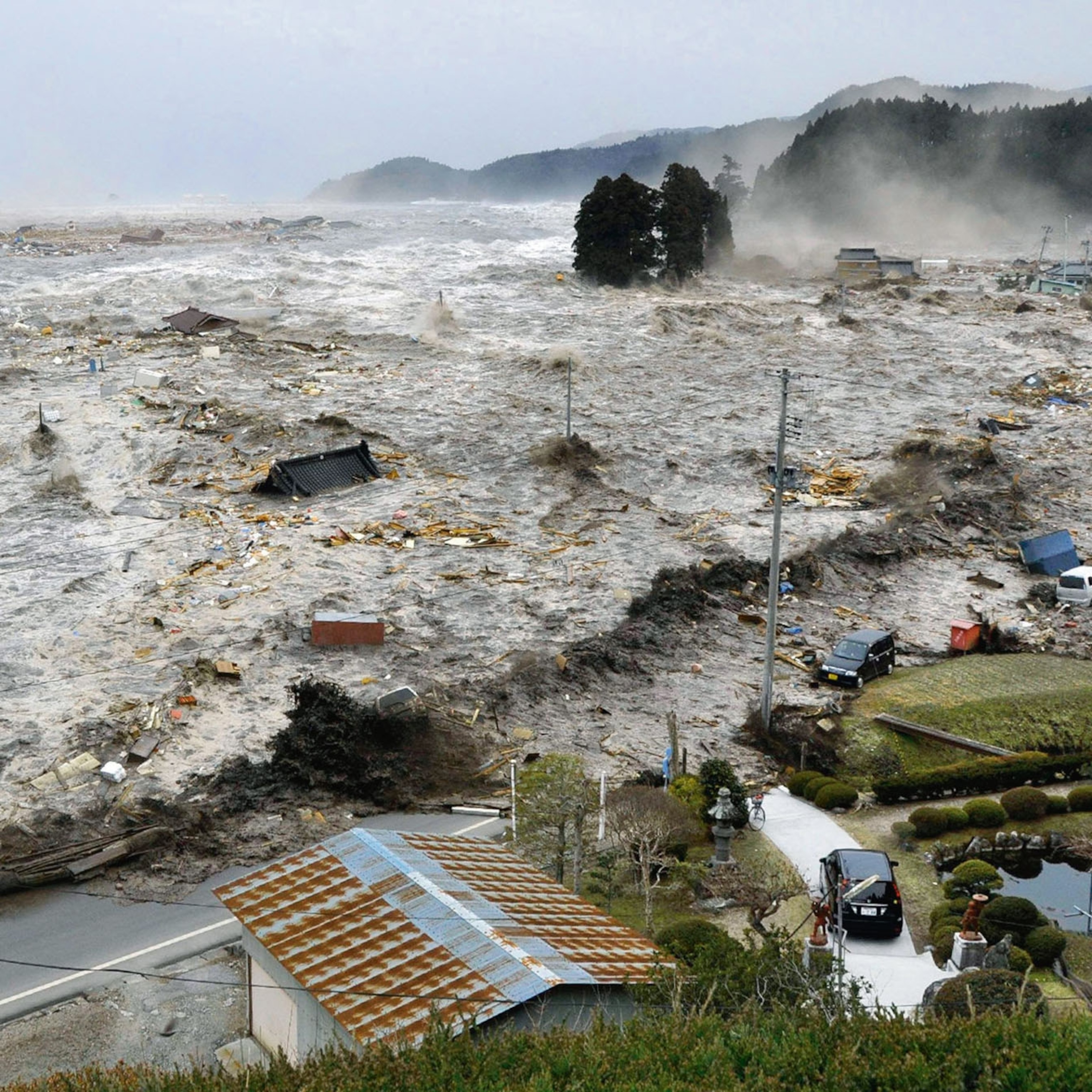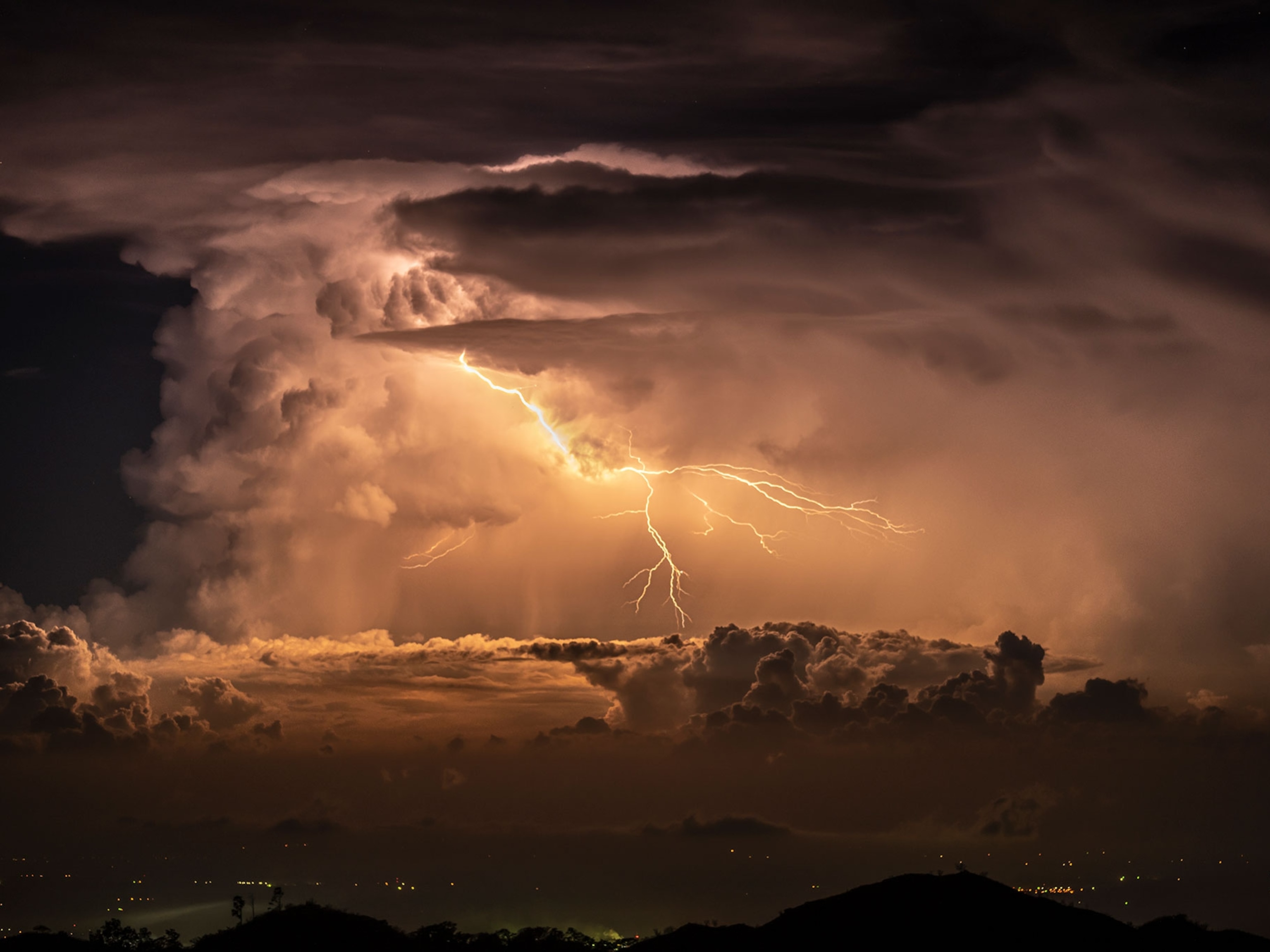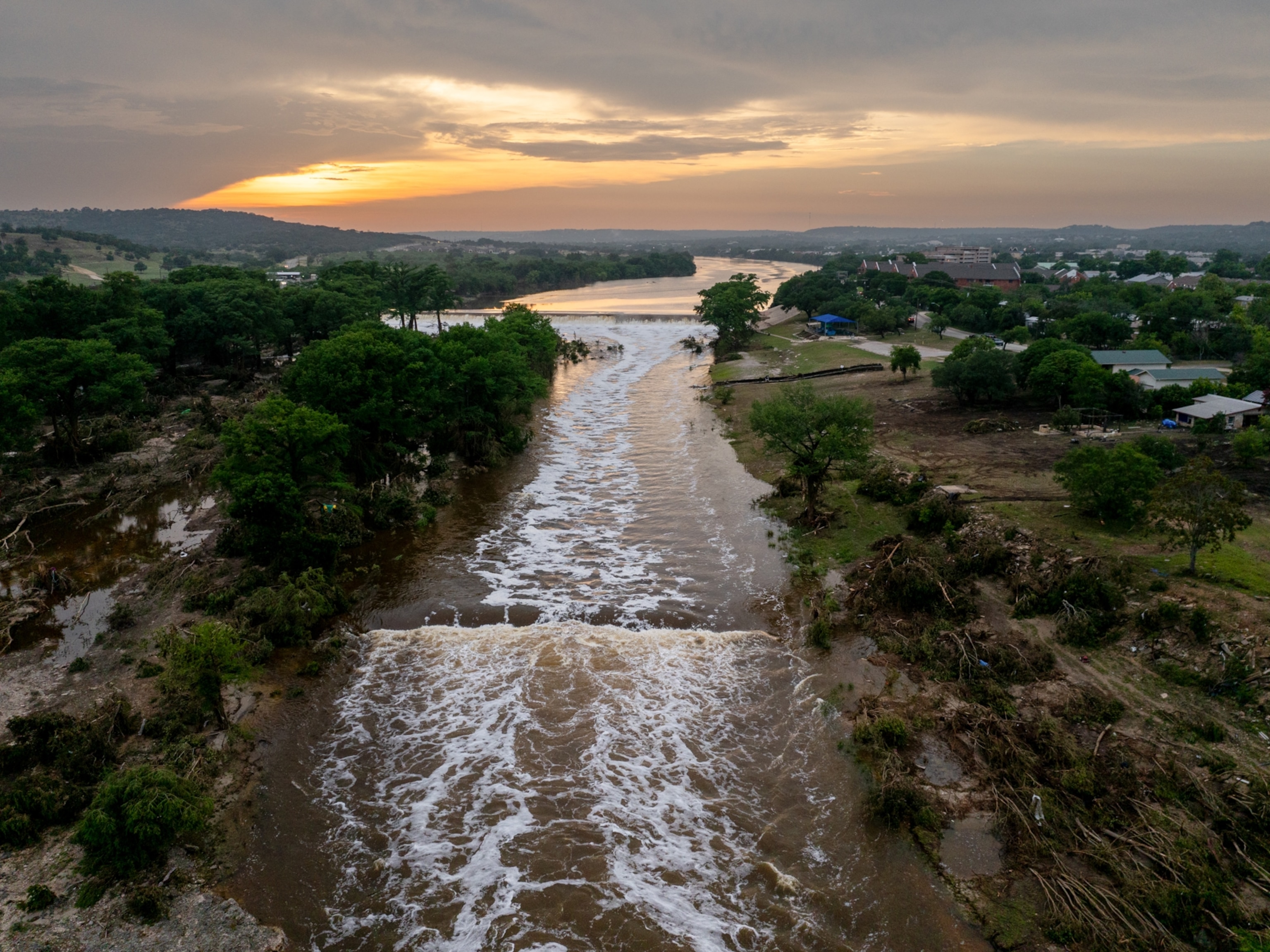
Rising Seas: Will the Outer Banks Survive?
Development and climate change are causing the islands to slowly vanish, scientists say.
The tourists flocking to North Carolina's Outer Banks right now know that the joys of summer there—the gorgeous beaches, the wild horses, the views of the lighthouse at Cape Hatteras—come to an end as the season fades.
But they may not know that the place itself is disappearing from the map.
Under the combined effects of storms, development, and sea-level rise, portions of this narrow, 200-mile island chain are collapsing, says Stanley Riggs, a coastal geologist at East Carolina University in Greenville.
"We're losing them right now," he says. "In the next ten years, it's going to be awful."
In an area of Hatteras Island between Avon and Buxton, the beach has receded about 2,500 feet in the past 150 years. That portion of the island has narrowed to just 25 percent of its original width, according to Riggs. In Buxton and Rodanthe, and farther north in Nags Head, houses and hotels once solidly on land stand on spindly stilts in the surf.
State Highway 12, the only road to Hatteras Island, repeatedly has buckled and washed out during storms. It briefly closed after Hurricane Arthur made landfall July 3.
The erosion is set to worsen as sea-level rise accelerates around the world because of global warming. (Read "Rising Seas" in National Geographic magazine.)
As that happens, coastal communities everywhere will face the same wrenching decisions that confront Outer Banks inhabitants today—and that are causing enormous fear there, says Michael Orbach, professor emeritus of marine policy at Duke University's marine lab in Beaufort, North Carolina. What's at stake for locals is not just summer fun but a way of life and an entire economy that is now based on tourism.
"All these effects that people have been talking about for years are now actually starting to be seen," Orbach says. "And they realize that we don't know what to do about it."
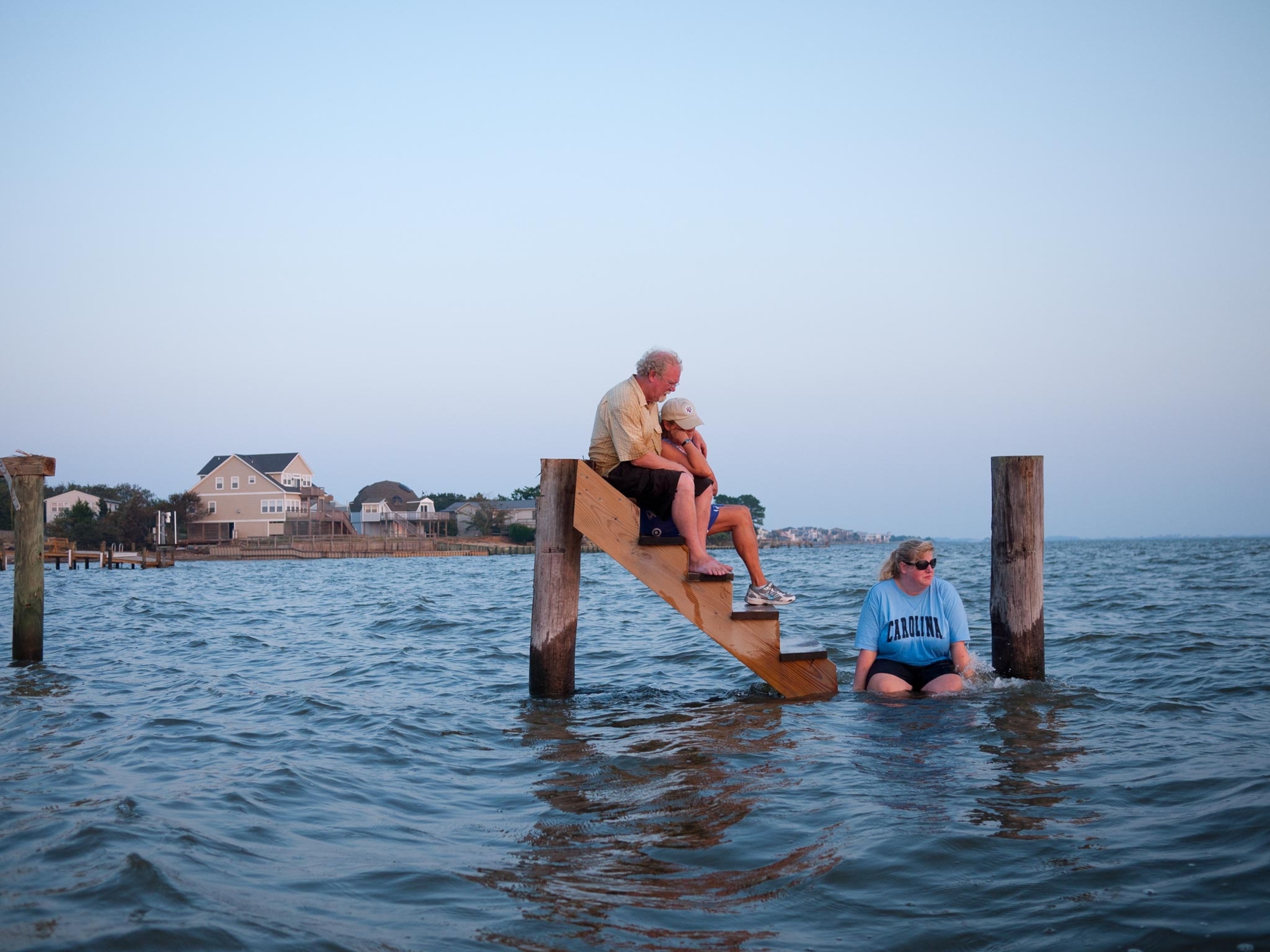
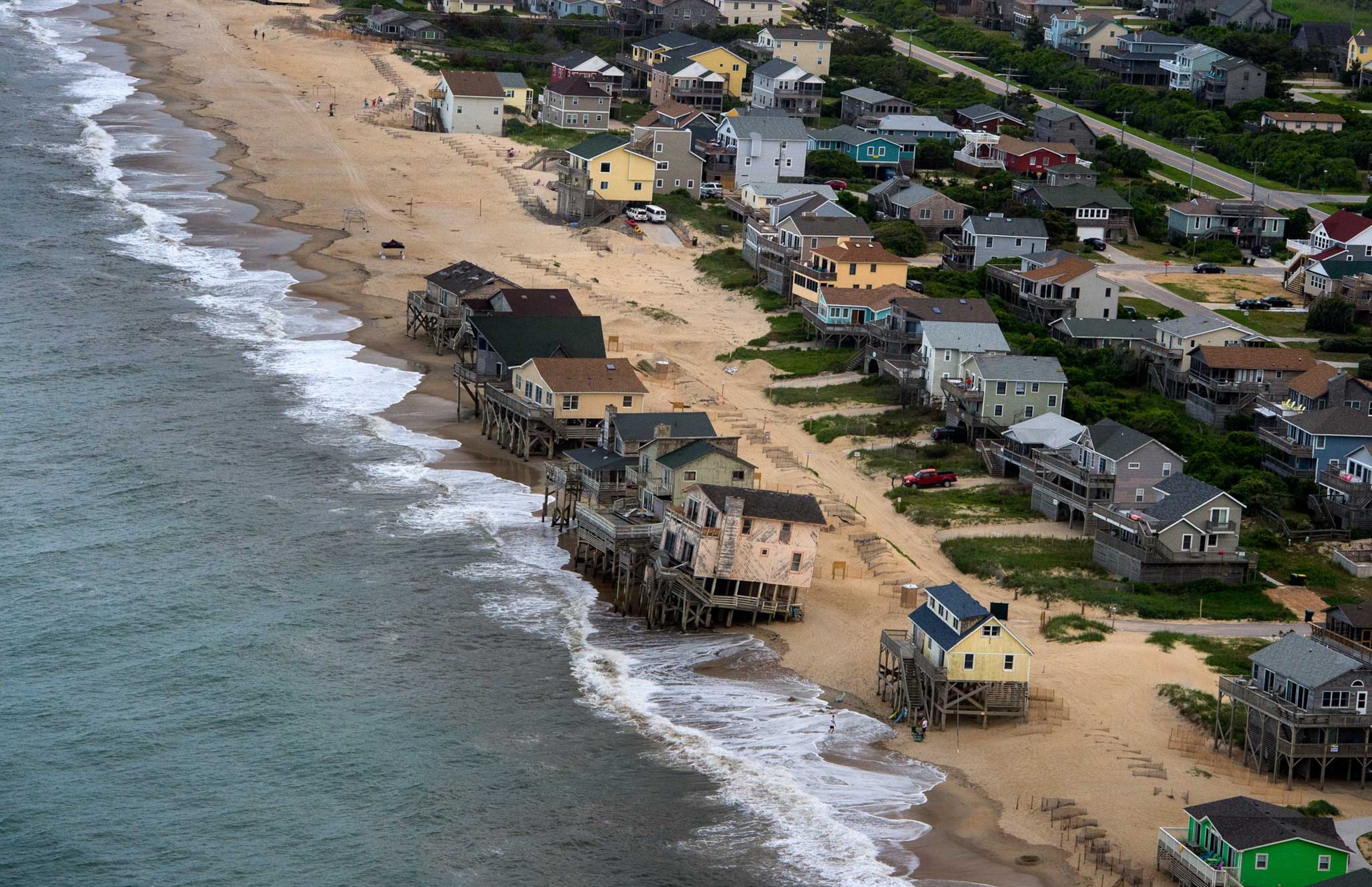
A Prediction, Then a Backlash
Riggs has been studying the state's coastline since 1967, when he got a job at East Carolina University to start a coastal and marine science program in an unused building on Roanoke Island. In 2010, he was a member of a science panel that produced a controversial report warning that North Carolina could face 39 inches (1 meter) of sea-level rise by 2100, as glaciers melt and ocean waters warm and expand.
The report prompted a backlash from coastal developers and climate skeptics—and in 2012, from the state. Lawmakers in Raleigh considered a bill that would have prohibited state agencies from planning for accelerated sea-level rise.
Environmentalists were outraged, bloggers snickered, and even comedian Stephen Colbert weighed in: "If your science gives you a result you don't like, pass a law saying the result is illegal," he joked. "Problem solved."
Eventually, the state settled on a watered-down version of the law: a four-year moratorium on sea-level regulations, and an order for a new scientific study of sea-level rise, due out in 2015. In May, a state commission asked the science panel to limit its next sea-level forecast to 30 years.
The irony of the whole argument, Riggs says, is that the coast as we know it is already vanishing. "Sea-level rise and storms are taking out eastern North Carolina today—not a hundred years from now. They're doing it today," he says.
Two other scientists who have studied North Carolina's coast, Orrin Pilkey, an emeritus professor of Earth sciences at Duke University in Durham, and Rob Young, director of a shoreline research program at Duke and Western Carolina University in Cullowhee, agree that the islands are undergoing significant changes.
"Portions of the Outer Banks, particularly Hatteras Island, are in big, big trouble right now," says Young, who was also a member of the sea-level science panel. "That barrier island is falling apart."
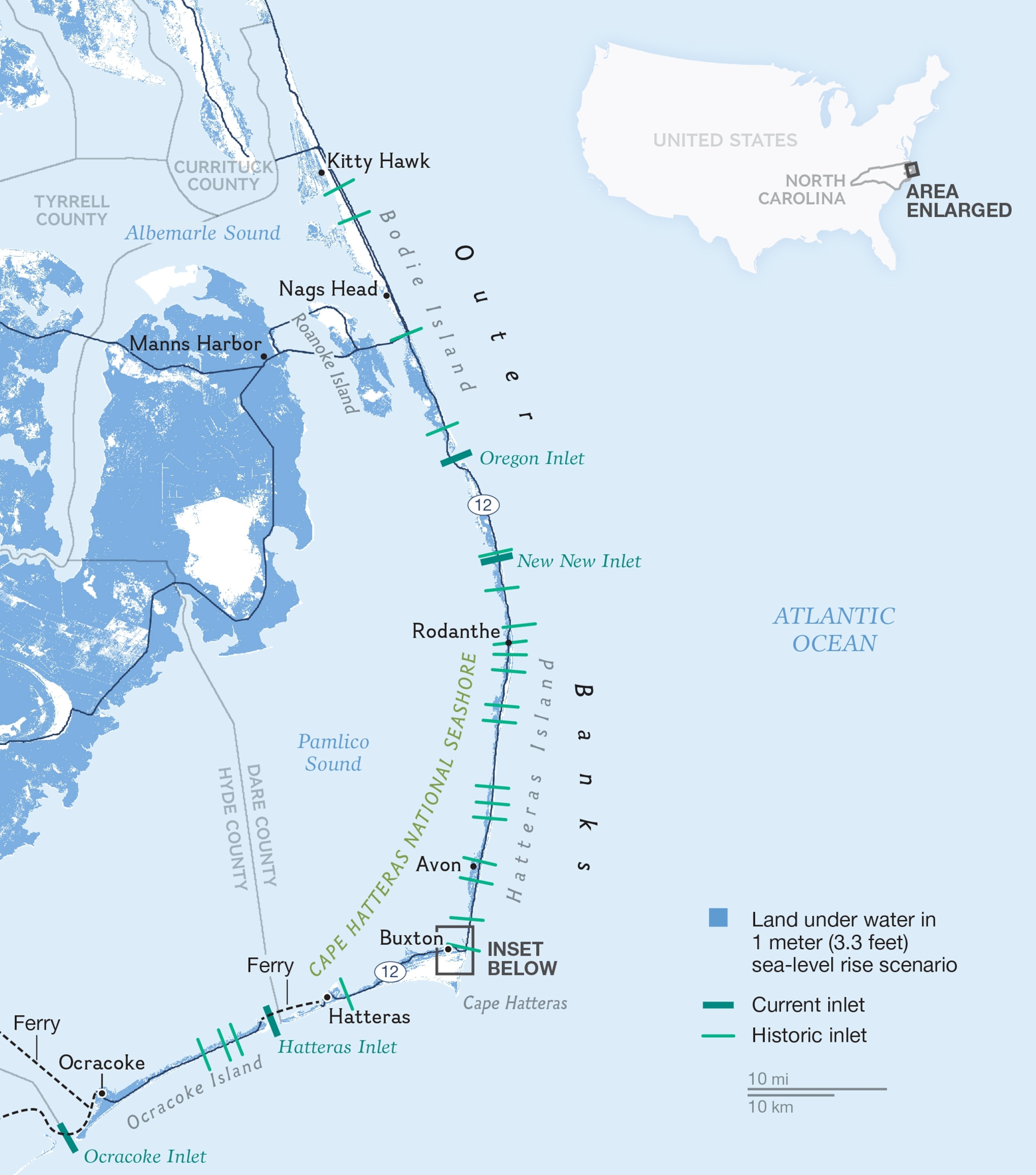

"Critical Condition"
One evening in late June, Carol Dawson, owner of the Cape Hatteras Motel in Buxton, on Hatteras Island, gazed out at the surf from her motel balcony. Over the years, she has watched the ocean eat closer to her buildings.
"Our property line is about where that wave is cresting," she says, gesturing toward a point about 500 feet out in the water.
At the motel next door, owned by Dawson's mother, children capered on sandbags piled on what remains of the beach. Every few minutes, a wave washed around the sandbags and under the steps of the motel units closest to the water.
Dawson says repeated closures of State Highway 12 have hurt business on Hatteras Island. As the ocean edges closer to her motel, Dawson says her business is in critical condition.
In 2012, according to the U.S. Travel Association, tourism generated $926 million just in Dare County, which includes most of Hatteras Island, Kitty Hawk, and the town of Nags Head. Summer visitors swell the population of Nags Head from 3,000 to 60,000.
"Our only industry is the tourist industry, and without a beach there is no tourist industry," says Nags Head Mayor Bob Edwards.
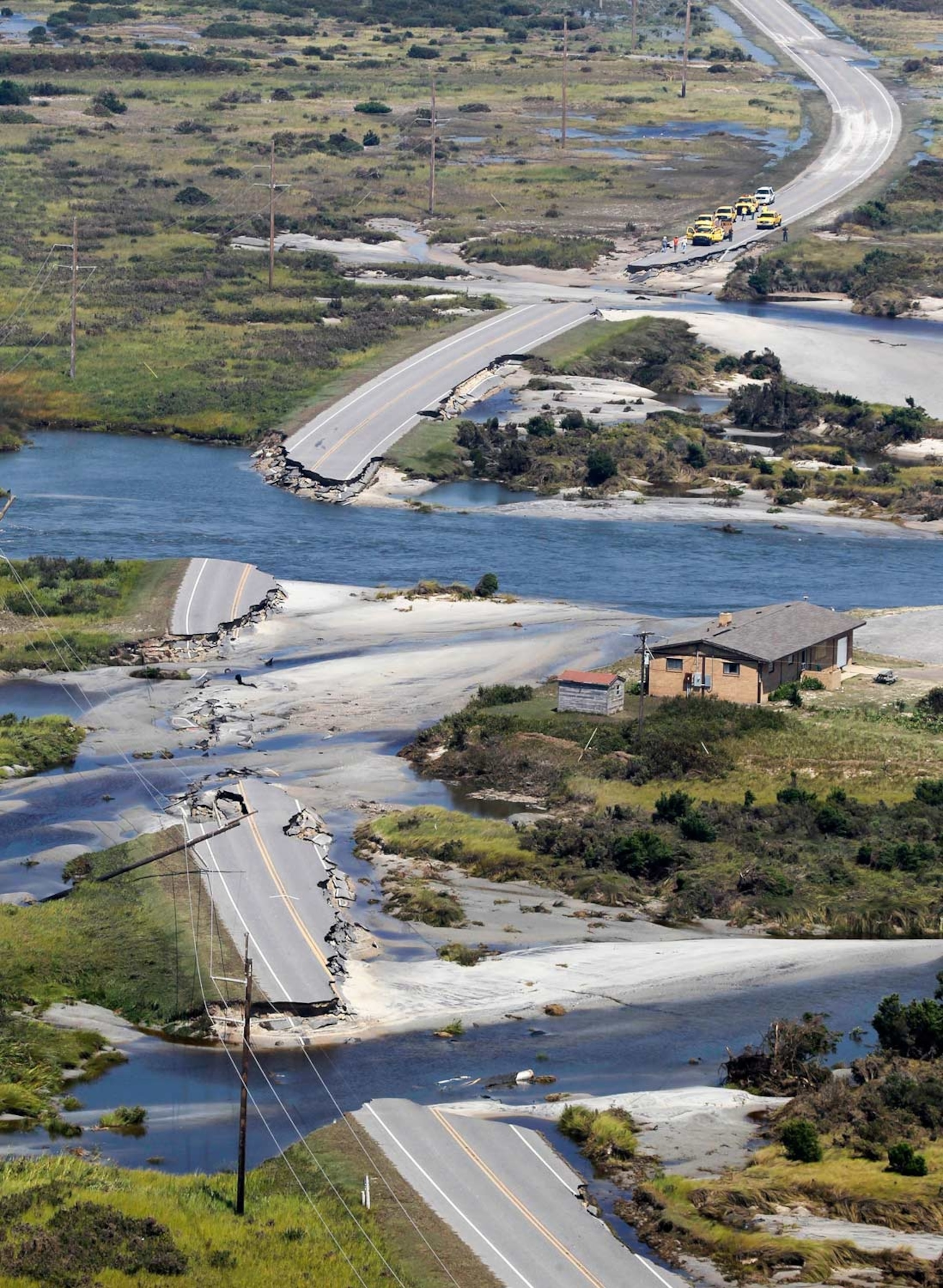
Shifting Sands
People often describe the Outer Banks as fragile, but the sandy islands are remarkably resilient, at least in the natural course of things. Just as engineers design buildings in earthquake zones to sway with the movements of the Earth, barrier islands move in response to storms and sea-level rise.
During the last ice age, 20,000 years ago, so much water was locked up in continental ice sheets that sea level was 410 feet lower than it is today, and the Atlantic coastline was 15 to 40 miles east of the present-day Outer Banks, according to a book Riggs co-authored, The Battle for North Carolina's Coast: Evolutionary History, Present Crisis, and Vision for the Future.
Barrier islands formed off North Carolina's coast at least 7,000 years ago, after most of the ice had melted. Over the millennia, as sea-level rise continued at a slower pace, the islands and the sound behind them moved landward. They began forming in their current location 2,000 to 3,000 years ago, when the sea all but stopped rising.
Since 1900, it's been rising again at an accelerated pace, due in large part, climate scientists say, to man-made global warming. In principle, the islands should be migrating west.
The mechanism works like this: From time to time, storms slice new inlets through the islands. Seawater rushes through, depositing sand behind them. Meanwhile, waves and wind push sand across the top of the islands. As the ocean side erodes and the sound side grows, the islands slowly roll over themselves, like a bulldozer's tread.
Or at least they would if the same development that transformed the Outer Banks into a vacation wonderland hadn't jammed the machinery of island migration.
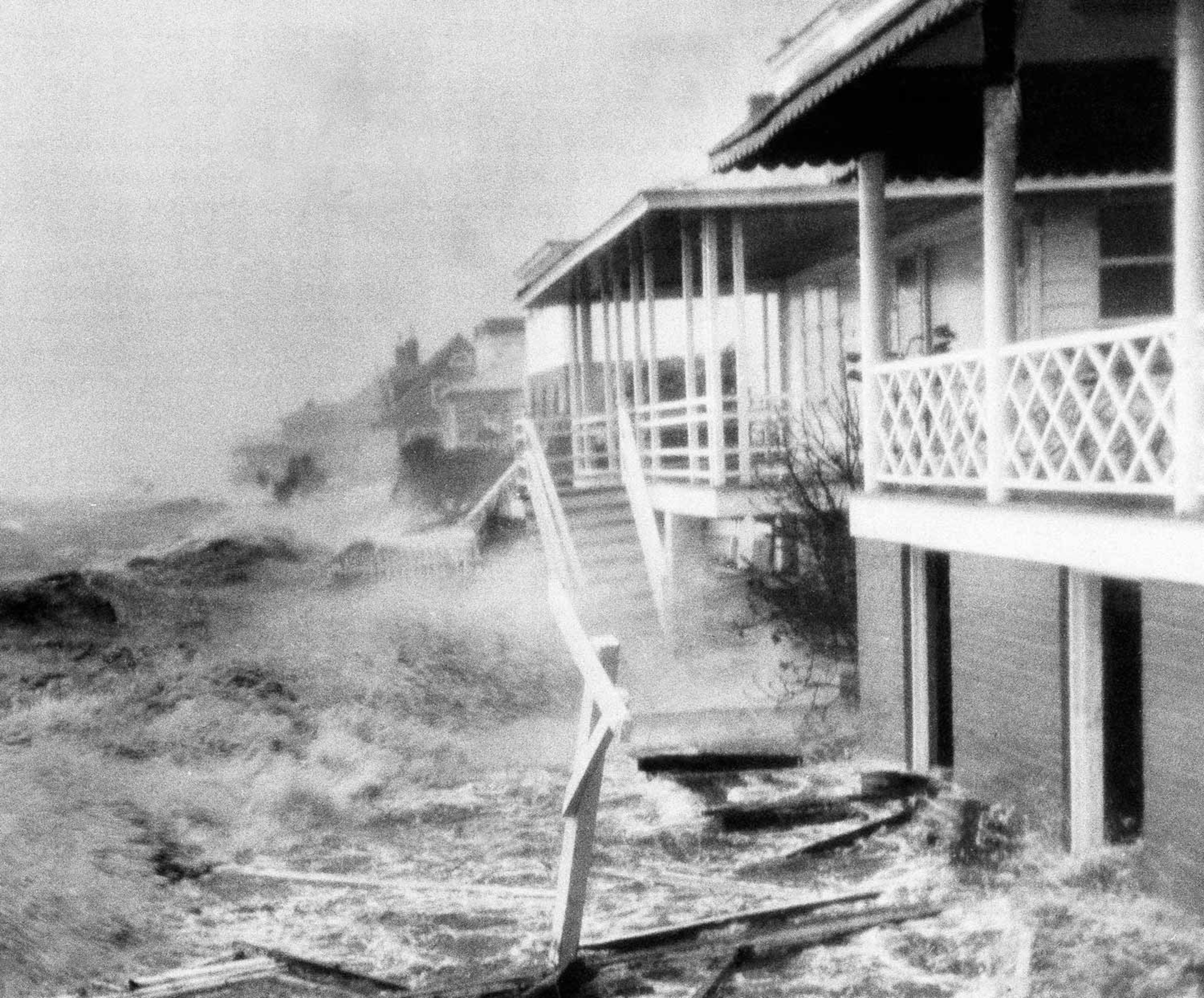
Before World War II, the people who lived in the islands' fishing communities built their houses on high ground, far from the ocean's edge, and traveled by boat. That started to change in the 1950s, when paving began on State Highway 12. To protect the road from storms, workers piled sand east of the highway on artificial dunes first built in the 1930s. When storms carved inlets through the road, engineers filled them.
The dune-building and inlet-filling blocked the movement of sand across the islands. On the ocean side, the islands kept eroding, but now they didn't grow on the sound side. So they narrowed.
Other engineering projects meant to protect human activities, such as dredging and building hard structures called jetties and groins, made erosion worse, Riggs says.
Even so, the road brought tourists, and a new economy developed around beachfront rental homes, hotels, and stores. The permanent population of Dare County, about 35,000, is six times as large today as it was in 1950—and the residents all have a stake in preserving the islands where they are.
The ultimate fate of the islands depends on how quickly the rise in sea level accelerates in the coming decades and how many major hurricanes slam the islands. Riggs predicts the lowest, narrowest islands could break up into a system of small, eroded island remnants and shoals.
Without human interference, the islands would adapt to accelerating sea-level rise by migrating west, says Duke's Pilkey. Instead, because of engineering projects, they're "standing perfectly still, and we're beating our head against the wall trying to hold those shorelines in place."
Will we succeed?
"No, of course not."
To Stay of to Go?
Riggs has proposed that the state remove portions of State Highway 12 and stop maintaining the large dunes that protect it. Withdrawing the road and dunes would allow sand to wash over the islands and rebuild them. In his view, tourists could travel by ferry, like those that connect people to Ocracoke and Bald Head Islands today.
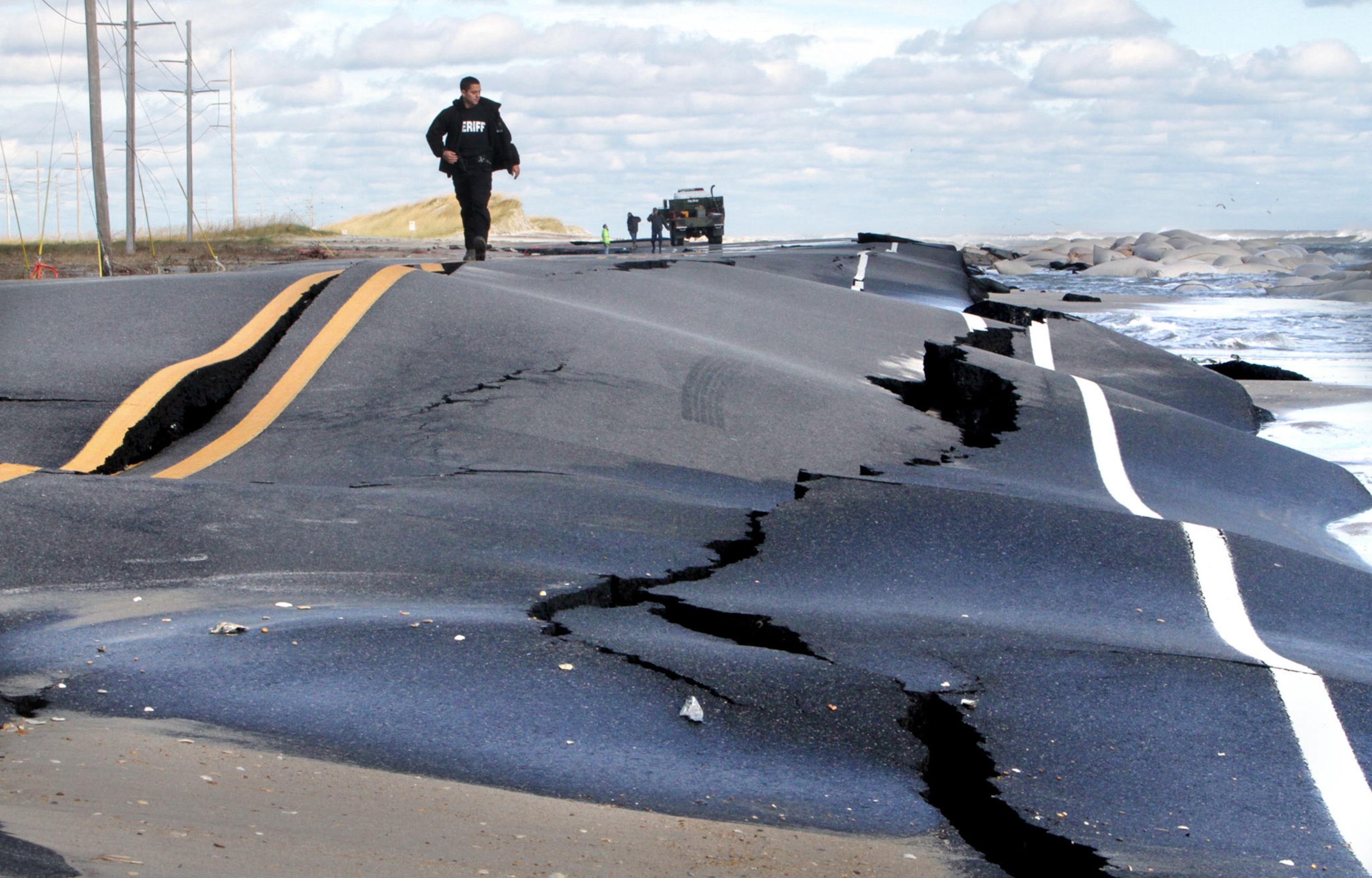
The idea doesn't appeal to locals, who say ferries couldn't keep pace with the number of visitors who want access to the islands. "It's not 1950," says Dawson, the motel owner. She's in favor of shoring up narrowing beaches with sand delivered from elsewhere.
The town of Nags Head completed a $36 million "beach nourishment project" in 2011, paid for with local taxes. Edwards, the mayor of Nags Head, says nourishment protected the tourism industry and buffered the town during Hurricane Sandy.
According to a survey conducted in June by the contracting company that completed the Nags Head project, 97 percent of the sand from the project still remains. But Nags Head may be an outlier; Riggs says other beach nourishment projects in the state lasted only two or three years.
Beach nourishment isn't a long-term solution, says Orbach, the marine policy specialist, because there isn't enough sand to go around for all of the communities on the Atlantic Coast that will want it in the next 50 years.
"As a practical matter, we will try to defend some places for some period of time," he says. "But also as a practical matter, we will not be able to defend most coastal places throughout time. We will, in fact, retreat from most coastal places when the sea level gets more than one or two meters above where it is now."
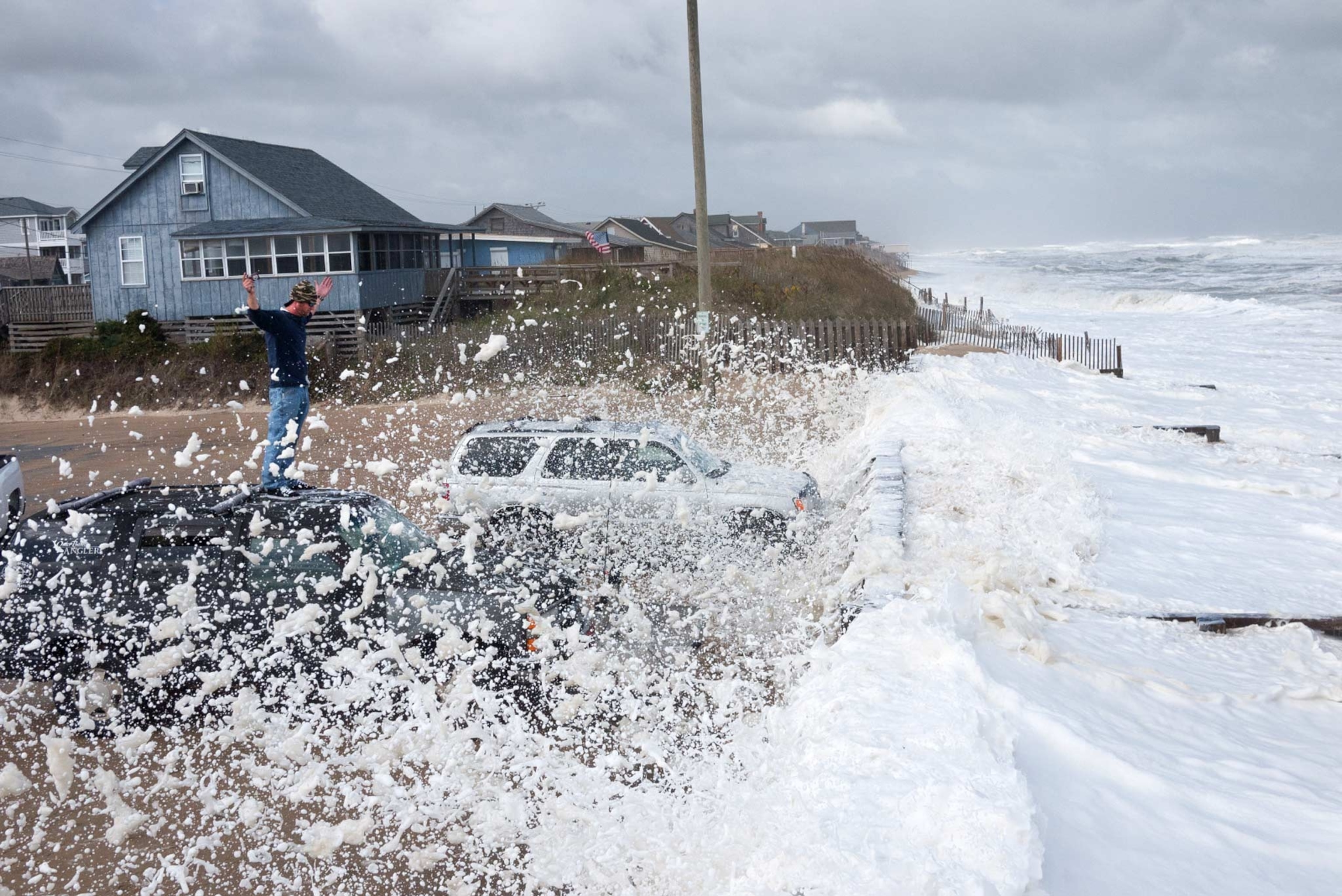
For Hatteras residents such as Ernie Foster, 69, a charter-boat captain, retreat would mean more than packing a moving van. Foster's great-grandparents and grandparents were born on the Outer Banks.
When Hurricane Arthur came through in early July, he stayed home, despite a mandatory evacuation order. He loves the way his community sticks together to rebuild after a storm, he says.
Asked how he would feel about leaving Hatteras, Foster's eyes well up.
"My family cemetery, down behind the home that I grew up in, is one in which my grandfather and my father and mother and some uncles and aunts are buried, and I will be buried there as well," Foster says. "When the island washes away, I'll just go with it."
Eileen Mignoni contributed reporting.



